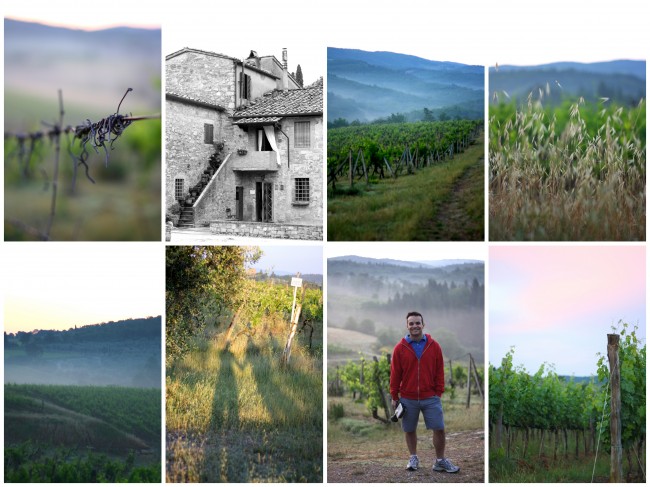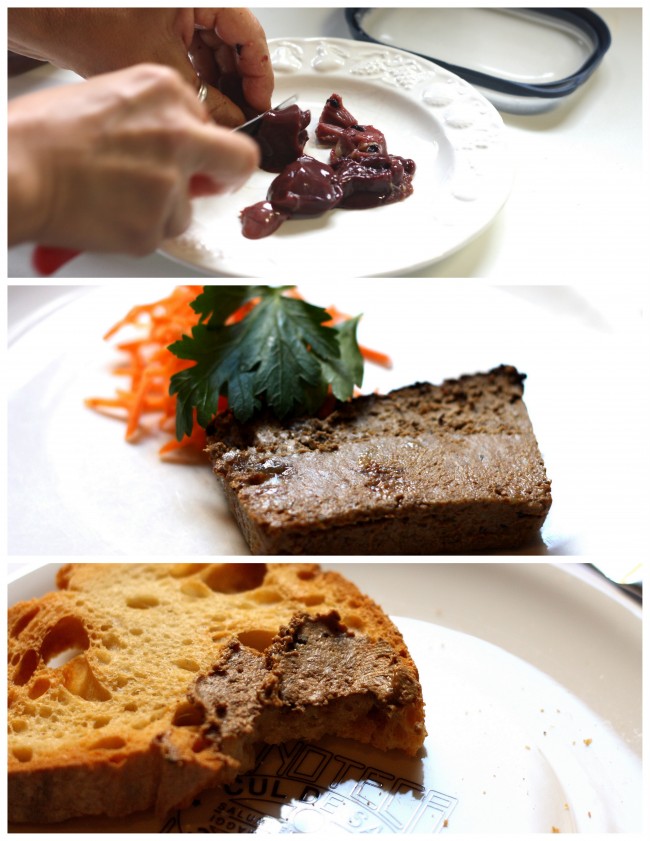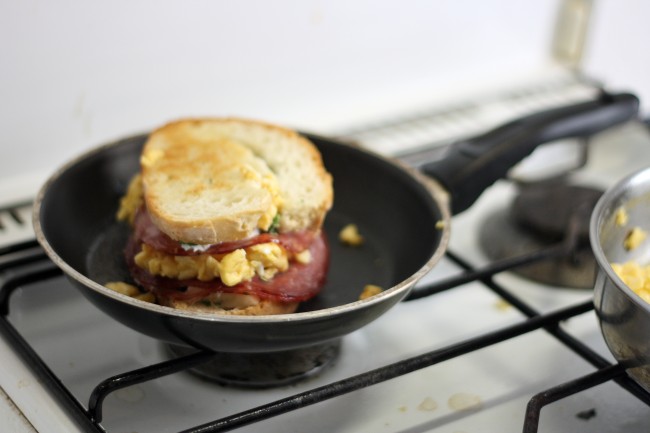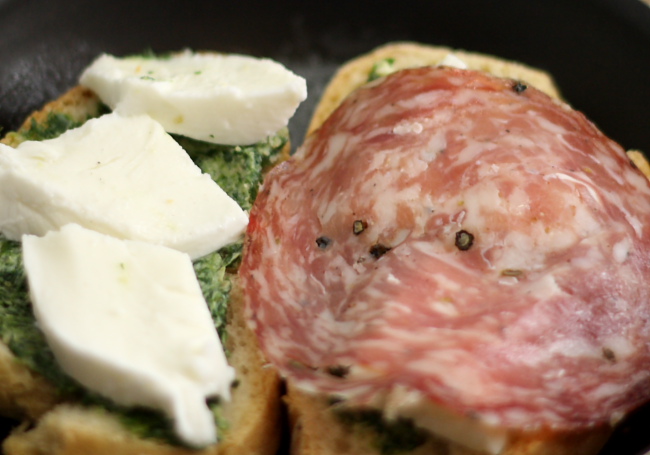Don’t book your tickets to Portofino just yet. There’s still two more virtual Italian food tours to go. Next stop: Tuscany.
First off, let’s talk accommodations. There’s only way to stay in Tuscany, and that’s to take the agriturismo route, shacking up on a vineyard or a fattoria (a farm). We stayed at Fattoria Casa Sola outside the tiny village of San Donato in the Chianti region. Our room was an old converted farmhouse smack-dab in the middle of rolling vineyards as far as the eye can see.
Not only is it breathtakingly beautiful and impossibly romantic, but you also have instant access to the best Tuscany has to offer: LOTS of vino. Before we get our buzz on, let’s talk about our fantastic cooking lesson experience–right in the kitchen of our little converted farmhouse.
The wonderful Giovanna was our personal tour guide to everything edible in Tuscany.
I’ll share her recipes in later posts—chicken liver crostini, fried zucchini blossoms stuffed with anchovy, homemade spinach ravioli and strawberry-mint tiramisu—but for now, enjoy a little Tuscan food porn:
What to eat in Tuscany:
Chianti
Yes, technically this isn’t a food, but many would say it’s just about the most important part of a Tuscan meal. I would have to agree. Wine tasting events in the Chianti region are plentiful and the number of wineries that participate is buzz-inducing—literally. We paid €15 for unlimited tasting and a souvenir wine glass. Chianti isn’t for everyone, but Dave and I happen to love it. Needless to say, we got our money’s worth—especially since several of the bottles sell for more than €100 in stores. Many of the vineyards also had a Vin Santo for tasting, an amber-colored, extremely sweet, high-alcohol dessert wine, typically served with biscotti.
Casa Sola has several fantastic Chiantis, which added a few lbs. to my suitcase on the way home.
Crostini di Fegatini (Chicken-liver pâté)
Don’t knock this Tuscan staple until you try it. The rich flavor of the fatty liver—combined with the mushrooms, onions and white wine—is undeniably delicious. If you’re squeamish about offal, fear not—it’s rendered unrecognizable by the immersion blender.
Tuscan bread
Tuscan bread has no salt, but that didn’t stop me from inhaling entire loaves of it. Slathered in fresh butter, sprinkled with a little salt, or sandwiching scrambled eggs, salami, spinach and ricotta, it’s what dreams are made of.
Yes, I grocery shopped and cooked on my honeymoon. I’ll accept my Wife of the Year award now.
Cured meats
One glance at the salami selection in a local San Donato butcher shop was enough to make Dave salivate. I’m a little less into cured meats—although I do love me some prosciutto—so I abstained; but for all of those salami lovers out there, Dave assures me it was some of the best he’s ever tasted.
Olive oil
Many of the same vineyards that produce the aforementioned Chianti also make extra virgin olive oil. It’s another can’t-go-wrong food souvenir.
Other Tuscan specialties that I either didn’t have the opportunity to sample, or that didn’t live to be photographed, are Bistecca all Fiorentina (a thick, T-bone steak, usually served rare), gamey meats, including hare, and meat stuffed pastas. Stay tuned for the best bets in the Amalfi Coast.









2 Comments
heather @ chiknpastry
glad you’re back! just saw a click-through from your site on my site and thought I’d see what you were doing over here!
congrats on the wedding. the honeymoon looks a-mazing :).
admin
Thanks Heather! Yes, long hiatus, but I am back in action 🙂 haha